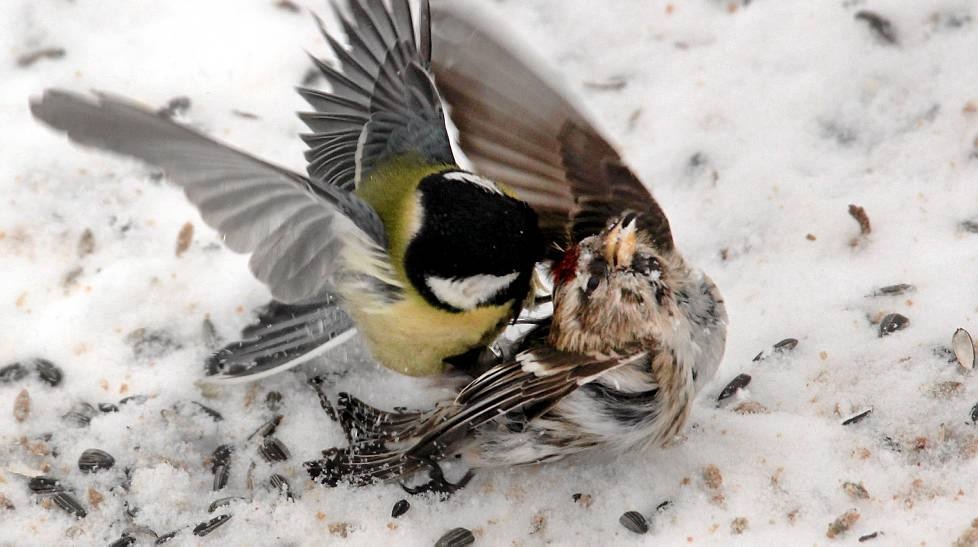
You don’t need to watch horror films to witness some of nature’s nightmares. Indeed there are real monsters out there committing gruesome and zombie-like acts of gore on their fellow animals each and every day. From brain-eating birds to tongue-stealing bugs, these grim creatures have developed a variety of disturbing behaviours, guaranteed to make your stomach churn.
Sacculina
The sacculina, a type of parasitic barnacle, reproduces when the female sheds her shell and injects herself into the body of a crab. From here, her tendrils spread through the crab’s body and turn the crustacean into a hollow puppet: she steals its nourishment, prevents its limbs from regrowing, castrates it, and tricks its nervous system into caring for her eggs. Once the sacculina larvae hatch, ably assisted by the brain-dead host, the nasty cycle begins all over again.
Great tit
Don’t let this bird’s ridiculous name or innocent looks fool you—beneath the adorable feathery exterior is a psychotic killer with some very zombie-ish tendencies. Great tits love to feast on their fellow birds’ brains. They seek out smaller individuals and bash in their skulls with strong beaks before pecking hungrily at the cerebral remains. Yummy.
Tarantula hawk wasp
The tarantula hawk has a sting so painful that the recommended course of action is to simply lie down and scream like crazy in order to stop yourself from running around in agony and hurting yourself further. And that’s not even the half of it. This flying demon paralyses tarantulas, drags them into its den, and lays its eggs on the spider’s abdomen. All the helpless tarantula can do is wait in fear until the larvae hatch, when they’ll promptly bury into the spider’s body and feed on it voraciously, avoiding vital organs to keep the arachnid juicy, fresh, and alive for as long as possible.
Tongue-eating louse
The name says it all. This little bug loves swimming into a fish’s gills and attaching itself to the host creature’s tongue. Once there, it begins extracting blood from the fish using its front three pairs of legs, so that eventually the tongue withers away due to lack of nourishment. At this point, the parasite effectively becomes the fish’s tongue, sticking around to guzzle on mucus and blood while the fish continues to feed normally.
Giant gerbil
Until recently, fleas from black rats were thought to have caused the bubonic plague outbreak that killed 30% of the European population between 1347 and 1453. The infamous Black Death causes its victims to experience seizures, vomit blood, and lose extremities to gangrene. But it seems we’ve been blaming the wrong animal all along: in fact, it’s now thought that giant gerbils from Asia were the responsible host. So whilst these sweet looking rodents continue to maintain their innocent appearances don’t be fooled—they’ve got a lot of blood on their paws, having sown the seed of a pandemic that killed 75 million people worldwide.





